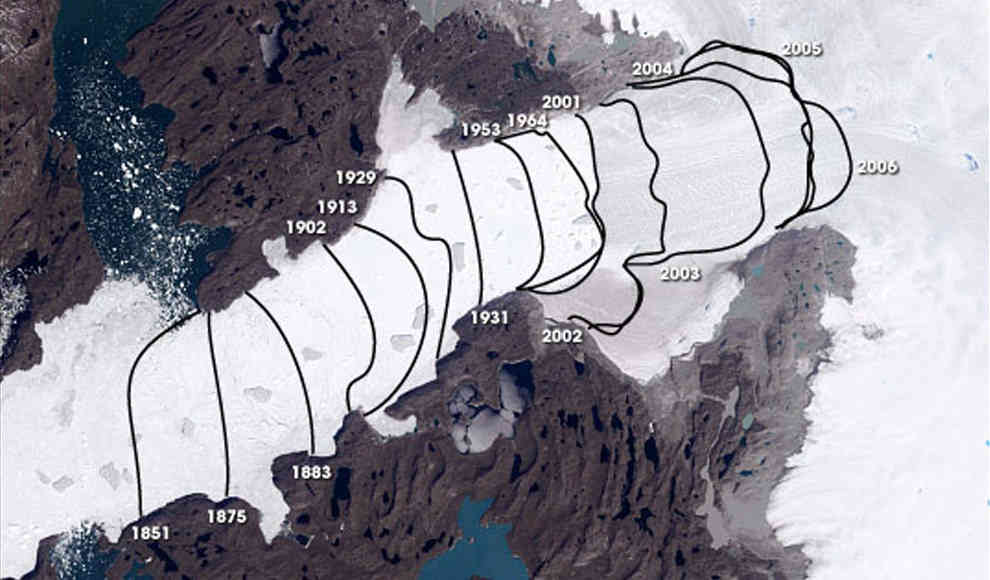The Jakobshavn Glacier in Greenland has been shrinking for years, but NASA has recently discovered that it is suddenly growing again. However, scientists believe that this is only a temporary phenomenon. The Jakobshavn Glacier is an outlet glacier that contains a significant amount of Greenland’s ice mass. Every year, about 35 billion tons of ice break off from the glacier, making it the most frequently calving glacier in the Northern Hemisphere. Since at least 1850, the glacier has been shrinking continuously. As a result of climate change, the glacier alone released enough ice into the sea between 2000 and 2010 to cause a one-millimeter rise in sea level. Additionally, the iceberg that sank the RMS Titanic in 1912 is believed to have broken off from the Jakobshavn Glacier.
Since 2012, the Jakobshavn Glacier has been thinning by about 40 meters per year, making it one of the fastest shrinking ice masses on Earth. However, NASA scientists have made an unexpected discovery: the glacier has been growing again for the past two years. Experts believe that this is likely due to a natural cyclical cooling of the waters in the North Atlantic. Ala Khazendar, a glaciologist at NASA, says that investigations have shown that the water in the Disko Bay, where the Jakobshavn Glacier flows into the sea, is two degrees Celsius colder than it was a few years ago.
While this may seem like good news, it is actually bad news in the long run. The current situation shows scientists that ocean temperatures play a much larger role in glacier retreat and advance than previously thought. In the coming years, water will become warmer due to climate change. Approximately 90 percent of the heat trapped by greenhouse gases goes into the oceans. “In the long run, we will probably have to increase our projections for sea level rise,” the scientists regret.










